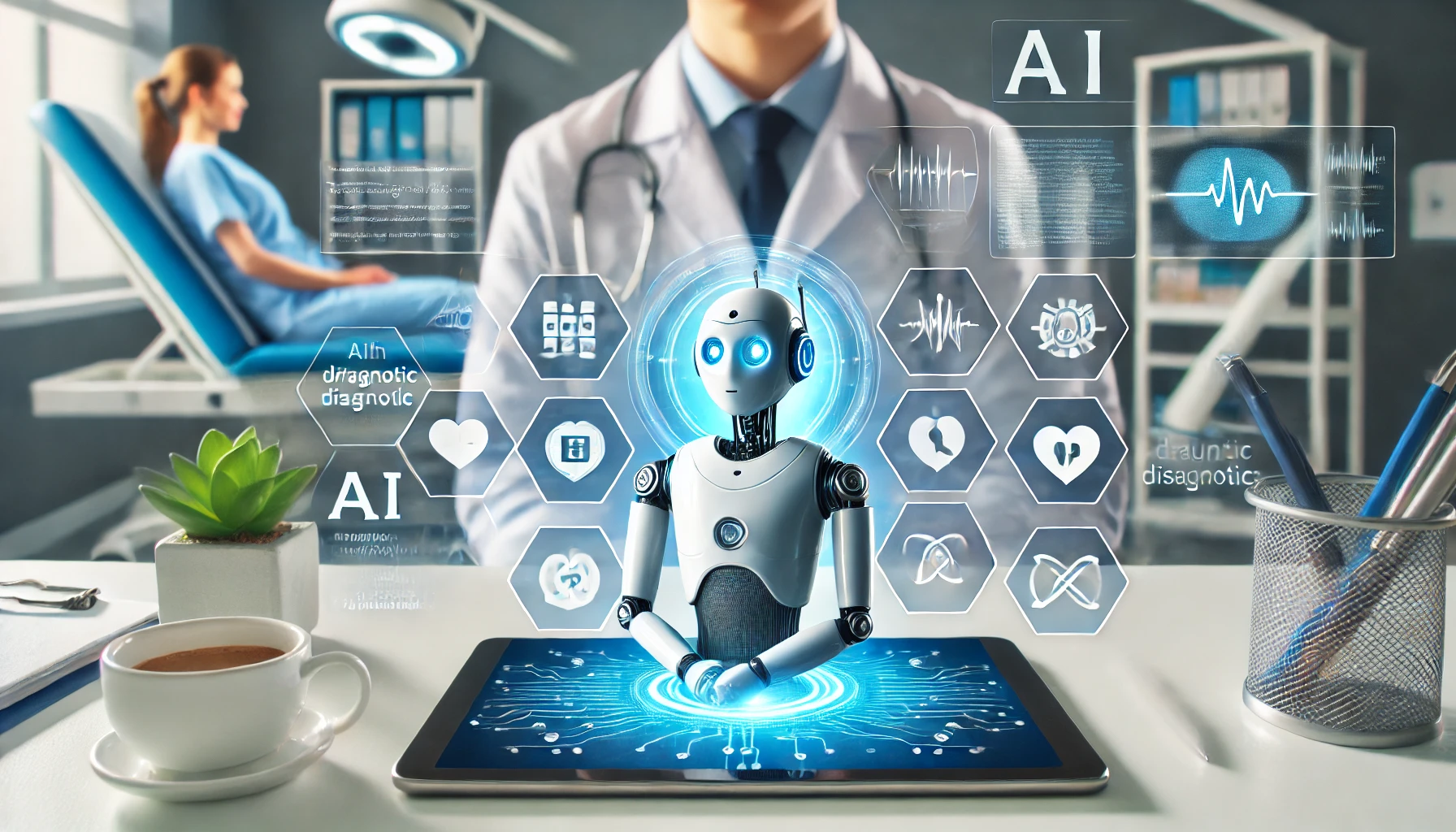The rising cost of healthcare is one of the most pressing issues facing healthcare systems globally. In the United States alone, healthcare spending reached $4.1 trillion in 2020, accounting for nearly 20% of the country’s GDP. As these costs continue to climb, patients and providers alike are looking for innovative solutions to reduce expenses while maintaining high-quality care. One of the most promising avenues to achieve this is through the use of Artificial Intelligence (AI).
AI offers a transformative approach to healthcare by improving efficiency, reducing human errors, optimizing treatment plans, and automating labor-intensive tasks. These improvements can help lower the financial burden on both healthcare providers and patients, creating a more affordable and accessible system.
The Healthcare Cost Crisis
The increasing cost of healthcare is driven by several factors, including administrative inefficiencies, the cost of medical procedures, pharmaceutical expenses, and the complexity of the healthcare system. According to the Centers for Medicare & Medicaid Services (CMS), administrative tasks account for roughly 8% of all healthcare spending in the U.S. alone, which translates into hundreds of billions of dollars.
Patients often bear the brunt of these costs through higher premiums, co-pays, and out-of-pocket expenses. The need for cost-effective solutions is dire, especially as populations age and chronic diseases become more prevalent. AI offers a promising path forward by streamlining operations, enhancing preventive care, and improving the accuracy of diagnoses.
AI’s Role in Reducing Healthcare Costs
1. Automation of Administrative Tasks
Administrative tasks, such as scheduling appointments, processing insurance claims, and managing patient records, represent a significant portion of healthcare costs. AI-driven solutions can automate these tasks, allowing healthcare staff to focus on patient care rather than paperwork.
For example, AI-powered chatbots and virtual assistants can handle routine administrative inquiries, schedule appointments, and follow up with patients for reminders. By reducing the need for human intervention in these routine tasks, healthcare providers can save time and money. Research has shown that AI can reduce administrative costs by as much as 30%, leading to significant savings for hospitals and clinics.
One such real-world application is UiPath Health Sciences. UiPath’s robotic process automation (RPA) solutions are used by several prominent U.S. healthcare systems, including Cleveland Clinic and Mount Sinai Health System, to automate back-office processes such as revenue cycle management, claims adjudication, and patient data entry.
Impact: UiPath’s automation tools have enabled healthcare organizations to handle high volumes of data efficiently, reducing human errors in billing and insurance claims, and shortening the time to receive payments from insurers. This not only saves costs but also accelerates service delivery to patients.
2. Improving Diagnostic Accuracy
Diagnostic errors are a costly issue in healthcare, both in terms of patient outcomes and financial impact. According to a study published in BMJ Quality & Safety, diagnostic errors affect 1 in 20 adults annually in the U.S. These errors can lead to unnecessary tests, incorrect treatments, and prolonged hospital stays—all of which increase costs.
AI can significantly reduce diagnostic errors by providing more accurate and timely analyses. For example, AI-powered image recognition systems can analyze medical images, such as X-rays and MRIs, faster and more accurately than human radiologists in some cases. This not only speeds up the diagnostic process but also reduces the likelihood of errors, resulting in better patient outcomes and lower costs.
A well-known example is the use of Google’s DeepMind AI in radiology. DeepMind’s algorithms have been trained to detect over 50 eye diseases from optical coherence tomography scans with expert-level accuracy. By identifying conditions earlier, DeepMind’s technology has the potential to prevent complications and reduce treatment costs. Hospitals that implement such AI-driven diagnostic tools can save substantial amounts in terms of both time and resources.
3. AI in Drug Discovery and Development
Developing new drugs is an incredibly expensive and time-consuming process, often taking years and billions of dollars before a new treatment reaches the market. AI is revolutionizing drug discovery by rapidly analyzing massive datasets to identify potential drug candidates more efficiently. By shortening the drug development timeline, AI can help reduce the costs passed on to patients.
For instance, BenevolentAI has developed an AI platform that identifies and designs new drugs by analyzing scientific literature, clinical trial data, and other sources. In 2020, the company used its AI to identify a drug that could potentially be repurposed to treat COVID-19. This discovery process, which would have traditionally taken years, was completed in a matter of months. Reducing the time and cost of drug development ultimately makes treatments more affordable for patients.
4. Personalized Medicine and Preventive Care
AI enables personalized treatment plans that cater to an individual’s unique genetic makeup, lifestyle, and medical history. By analyzing large datasets, AI can predict which treatments are likely to be most effective for a specific patient, reducing the trial-and-error approach that often leads to unnecessary procedures and costs.
In cancer care, for example, IBM Watson for Oncology uses AI to analyze patient data and recommend personalized treatment options based on the latest clinical evidence. This level of precision not only improves outcomes but also minimizes the need for costly treatments that may not be effective. Patients receive the right treatment faster, reducing the overall cost of care.
Moreover, AI’s predictive capabilities extend to preventive care. By analyzing patient data, AI can identify individuals at risk for chronic diseases, such as diabetes or heart disease, and suggest preventive measures. Preventive care is significantly less expensive than treating chronic conditions after they have progressed, making this an important cost-saving tool for healthcare systems.
5. Optimizing Hospital Operations
AI can help hospitals optimize their operations by predicting patient admissions, managing resources efficiently, and preventing unnecessary hospital readmissions. For example, AI-powered predictive analytics can forecast patient flow, helping hospitals allocate staff and resources more effectively, reducing waste and improving care delivery.
In the UK, NHS hospitals have employed AI to predict patient admissions during seasonal flu outbreaks. By anticipating a spike in patient numbers, hospitals can plan ahead, ensuring they have the necessary resources in place to handle the increased demand. This kind of operational efficiency reduces the financial strain on hospitals and ensures that patients receive timely care, which in turn lowers healthcare costs.
Challenges and Ethical Considerations
While AI offers significant potential for reducing healthcare costs, there are several challenges and ethical considerations that must be addressed.
1. Data Privacy and Security
AI relies on vast amounts of data to function effectively, and this raises concerns about patient privacy. The use of personal health information must comply with data protection laws such as HIPAA in the U.S. and GDPR in the European Union. Ensuring the security and confidentiality of patient data is critical to building trust in AI solutions.
Additionally, there is the risk of data breaches, which could expose sensitive patient information. Healthcare providers must invest in robust cybersecurity measures to protect against these risks, which can be costly.
2. Bias in AI Algorithms
AI algorithms are only as good as the data they are trained on, and if the data contains biases—whether racial, gender-based, or socioeconomic—these biases can be reflected in the AI’s recommendations. For example, a study from Naturefound that a widely used healthcare algorithm favored white patients over Black patients when predicting healthcare needs. This bias could exacerbate healthcare disparities instead of reducing them.
To address this, AI developers must ensure that datasets are diverse and representative of all patient populations. Continuous monitoring and auditing of AI systems for bias is also essential.
3. Cost of Implementing AI Systems
Although AI has the potential to reduce long-term healthcare costs, the initial investment in AI infrastructure can be significant. Smaller healthcare providers or those in low-income areas may struggle to afford the technology, potentially widening the gap between well-funded urban hospitals and underserved rural clinics.
To combat this, partnerships between government agencies, private companies, and non-profit organizations may be necessary to make AI technologies accessible to all healthcare providers.
AI has the potential to reshape the healthcare landscape by significantly reducing costs while improving patient care. From automating administrative tasks and enhancing diagnostics to enabling personalized medicine and optimizing hospital operations, AI offers a wide array of solutions that can ease the financial burden on patients and providers alike.
However, realizing AI’s full potential requires overcoming challenges related to data privacy, bias, and implementation costs. As AI continues to evolve, ethical considerations must remain at the forefront to ensure that these technologies contribute to a more equitable and affordable healthcare system.
Sources:
- Centers for Medicare & Medicaid Services. (2021). National Health Expenditure Data.
- BMJ Quality & Safety. (2021). Diagnostic Error in U.S. Outpatient Care.
- Olive AI. Automating Healthcare Operations.
- Google DeepMind. AI in Radiology for Early Disease Detection.
- IBM Watson for Oncology. AI for Personalized Cancer Treatment.
- BenevolentAI. AI in Drug Discovery.




